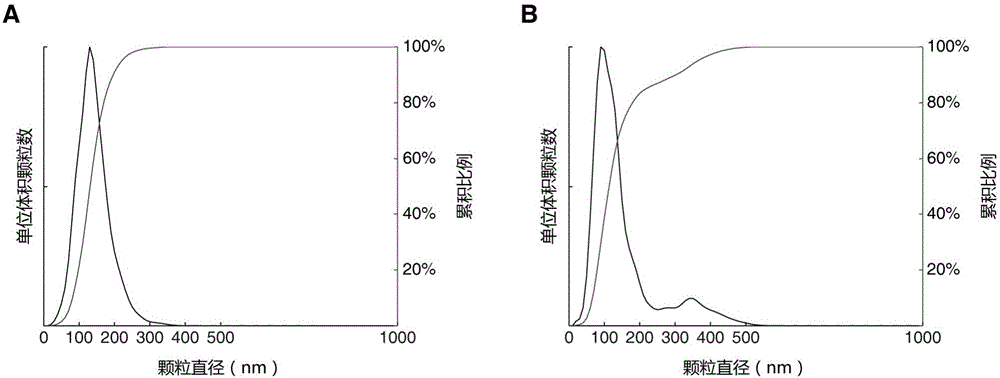Method for separating and extracting exosomes in lamination centrifugal-filtration mode
A technology of centrifugal filtration and exosomes, which is applied in the field of molecular biology and clinical testing, can solve the problems of limited number of parallel processing samples, lengthy operation process, unfavorable clinical application, etc., and achieve the effect of low cost of consumables and shortened operation time
- Summary
- Abstract
- Description
- Claims
- Application Information
AI Technical Summary
Problems solved by technology
Method used
Image
Examples
Embodiment 1
[0089] Example 1 A stacked centrifugal filter device for separating and extracting exosomes
[0090] The invention provides a stacked centrifugal filter device for separating and extracting exosomes (see figure 1 ), comprising a filter tube 1, an ultrafiltration tube 2 set on the outside of the filter tube 1 and a waste liquid collection tube 3 set on the outside of the ultrafiltration tube 2, the bottom of the filter tube 1 is provided with a filter membrane 11, and the inside of the filter tube 1 A primary filter lumen 12 is formed, an ultrafiltration membrane 21 is provided at the bottom of the ultrafiltration tube 2, a secondary filter lumen 22 is formed inside the ultrafiltration tube 2 below the filter tube 1, and the waste liquid collection tube 3 is inside the ultrafiltration tube The bottom of the filter tube 2 forms a waste liquid collection lumen 31, the top nozzle of the filter tube 1 is provided with a primary support edge 13, the top nozzle of the ultrafiltration...
Embodiment 2
[0099] Example 2 A kit for separating and extracting exosomes
[0100] The kit includes the following components:
[0101] 1) Laminated centrifugal filter device, as described in Example 1.
[0102] 2) Incubation buffer, including the following components: DPBS, 60-240 mM Tris·HCl buffer, 60-180 mM EDTA, pH 7-7.5.
[0103] 3) Proteinase K stock solution, the concentration is 5-40mg / mL.
[0104] 4) DPBS: KCl 200mg / L; KH 2 PO 4 200mg / L; NaCl 8g / L; NaCl 2 HPO 4 ·7H 2 O 2.16g / L.
Embodiment 3
[0105] Example 3 A method for separating and extracting exosomes
[0106] Exosomes were isolated and extracted using the kit of Example 2.
[0107] Include the following steps:
[0108] 1) Add 0.5 times the volume of incubation buffer to the sample to be tested, and add 0.05 times the volume of proteinase K stock solution, mix well, and incubate at room temperature for 8-15 minutes;
[0109] 2) Transfer the sample processed in step 1) to a stacked centrifugal filter device (see figure 1 ) filter tube, centrifuge, mix, and collect the retentate in the ultrafiltration tube.
[0110] Preferably, if you need to improve the purity of exosomes, add DBPS to the ultrafiltration tube, centrifuge at 3,000×g for 10 minutes to remove some soluble proteins, discard the filtrate and repeat this step once.
[0111] Preferably, mixing and collecting the retentate is the exosome solution, which can be processed later.
[0112] The method of the present invention is compared with the prior ...
PUM
| Property | Measurement | Unit |
|---|---|---|
| pore size | aaaaa | aaaaa |
| diameter | aaaaa | aaaaa |
| diameter | aaaaa | aaaaa |
Abstract
Description
Claims
Application Information
 Login to View More
Login to View More - R&D
- Intellectual Property
- Life Sciences
- Materials
- Tech Scout
- Unparalleled Data Quality
- Higher Quality Content
- 60% Fewer Hallucinations
Browse by: Latest US Patents, China's latest patents, Technical Efficacy Thesaurus, Application Domain, Technology Topic, Popular Technical Reports.
© 2025 PatSnap. All rights reserved.Legal|Privacy policy|Modern Slavery Act Transparency Statement|Sitemap|About US| Contact US: help@patsnap.com



